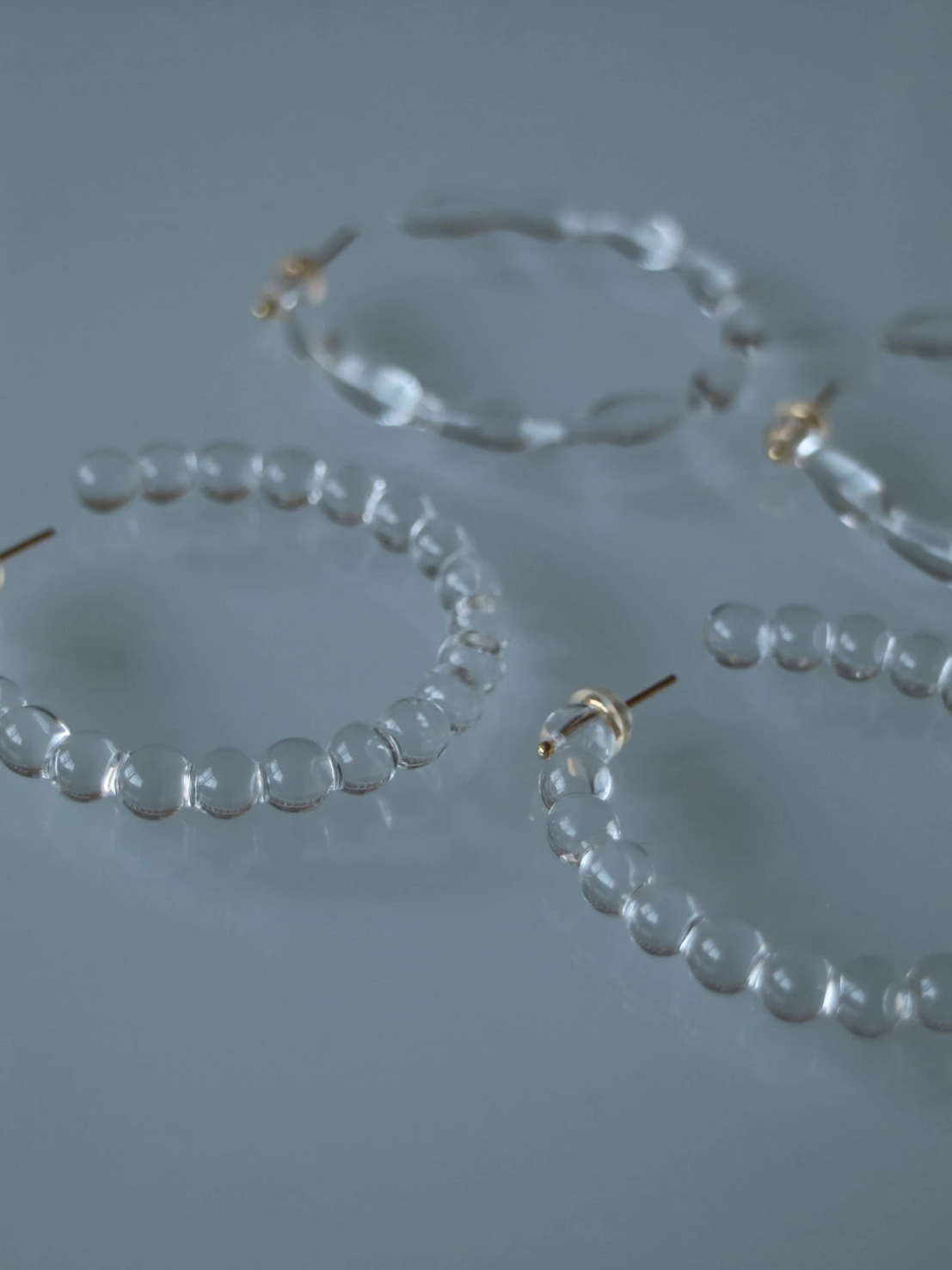Archives / Rotating Material - Metal
2018.09.14
Glass, rattan, mother-of-pearl... SIRI SIRI jewelry is made from materials found in our daily lives. In the series "A Journey to Materials," we delve into perspectives that create new value while uncovering the origins and characteristics of materials.
-
"Rotating material"
Speaking of jewelry, precious metals (gold, silver, platinum, etc.), SIRI SIRI is also used somewhere in most items.
Metal can be said to be a very convenient material because it is easy to process and does not easily oxidize when exposed to air.
This time, let's focus on gold, a metal that is inseparable from jewelry.
The metals used in jewelry are called "precious metals".
18k gold (yellow gold, white gold, pink gold), platinum, silver, etc. are materials that you often see.
Since the 1880s, South Africa has accounted for two-thirds of the world's gold, but today China is the largest producer of gold, followed by Australia, the United States, and Russia.
Metals, which are rare resources, have a "market price", and the price fluctuates at the rate of the day based on the trading price of the international market.
It is called "grade", and it is the percentage of gold contained that determines the grade of the metal. The higher the purity, the higher the quality.
For example, "24" is 100%, and 24K gold, which is called pure gold, contains 99.99% or more gold. About 91% of 22K gold and 75% of 18K gold are included. The rest is mixed with metals such as silver and copper called "warigane".
The addition of this split metal increases the hardness of the metal, so compared to 18-karat gold, 24-karat gold and 22-karat gold have fewer splits and are softer.
For this reason, 18K gold, which is easy to process and has hardness, is a popular material for jewelry.
The processing method is also ``forging'', which is hammered and tempered to increase the strength, and ``casting'', which makes a lot of the same thing by making a mold and pouring metal into it, as well as applying pressure along the mold. All kinds of manufacturing methods have been developed and put to use, such as "pressing," which creates additional shapes, and "welding," which melts and bonds contact points by heating.
---
In order to understand more about metals,
We visited a workshop that has been making dot series earring fittings for 10 years.
This time, we also had a silver ring production experience to get in touch with materials and techniques.
What I experienced was a technique called "lost wax" of "Casting"
It is a method of shaving wax to form the desired shape and replacing it with metal.
First, cut the inside of the ring or rod-shaped “wax” to the desired thickness and your ring size, and shape the outside into your desired shape.
Wax is easier to process than metal, and it is said to be very convenient in that it can be melted to lose its shape once it has been cast.


Depending on the work, you may need more force than you think, and if you apply too much force, the thin parts will break, so I felt that making delicate parts requires skill and experience.

Once the general shape is decided, smooth the surface with a file of No. 400 → No. 800. It was to finish beautifully, but it was a work that required perseverance if it was done by hand.

A "gypsum mold" is made from this wax, metal is poured into it (this time I left it to you), and the finished metal ring is finished by "polishing".


When finishing the metal, we start with a rough sandpaper, gradually finer it, and finally finish it off with a buff (machine).
Even just how to apply the file requires a knack for the direction and the amount of force.
In addition to "polishing", the finishing method is also called "honing", which gives a rough matte finish from the beginning.

When I buffed it at the end, it became so shiny that I could not recognize it.

The ring that I finished by myself shows the personality of each staff member, and when I put it on, it fits nicely, and although it is distorted, it has become a lovely thing.
---
Metals have developed over a long history, from the discovery of the material to the present day. It has been developed as a tool, popularized as a decorative item such as jewelry, and has been used in various ways to accompany people's lives.
And even across countries, it can be said that it is a material that maintains the same value and travels around the world.
Metal is a material that has a long history, is passed down from generation to generation, and is loved by the people who use it, and around the world.
: Metal care notes:
・After use, remove dust and oil with a dedicated polishing cloth.
・Please be careful not to do laundry or enter hot springs, pools, etc. while wearing it as it may cause discoloration.
(Check before cleaning items with stones or other materials.)


